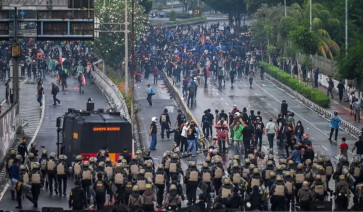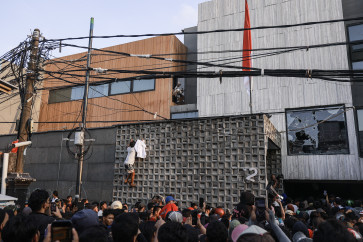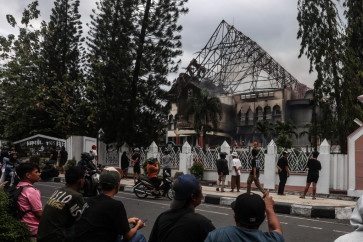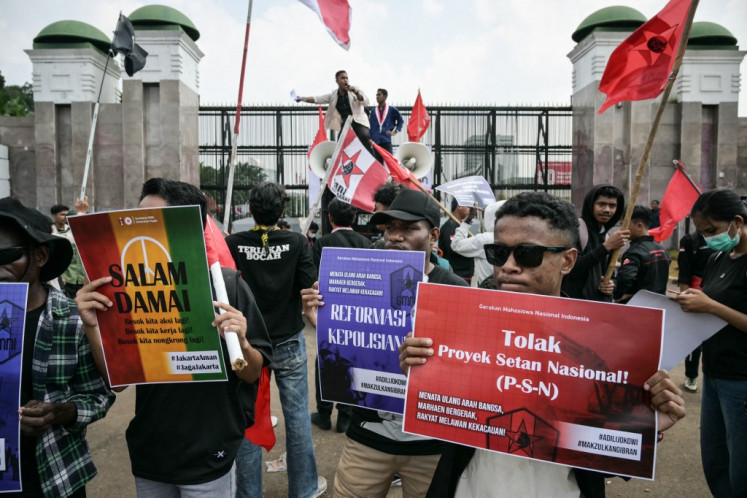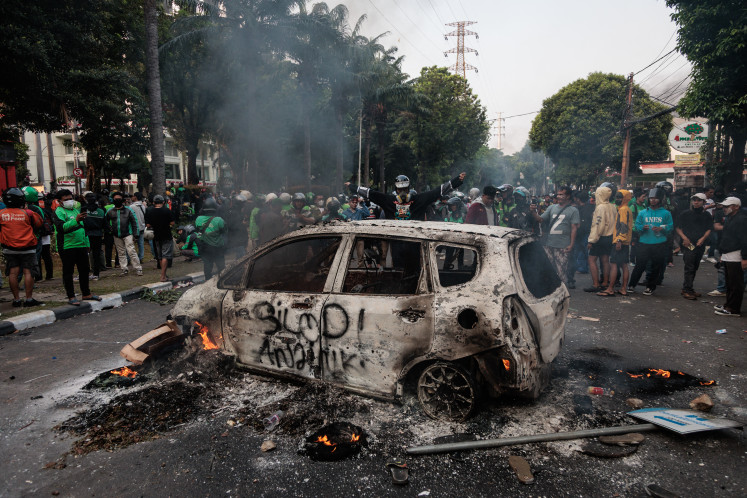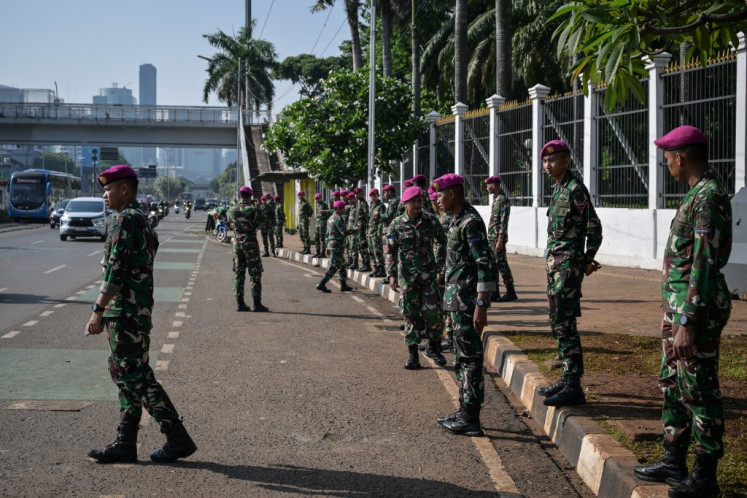Popular Reads
Top Results
Can't find what you're looking for?
View all search resultsPopular Reads
Top Results
Can't find what you're looking for?
View all search results‘Trembesi’ tree planting benefits Madura’s tourism
The Djarum Foundation’s Djarum Trees For Life (DTFL) program to plant trees along the outer ring road on Madura Island is more than the fulfillment of long-needed efforts to improve the local environment: The tree planting program is also expected to bring other benefits, including developments to the local tourism and economy
Change text size
Gift Premium Articles
to Anyone
The Djarum Foundation’s Djarum Trees For Life (DTFL) program to plant trees along the outer ring road on Madura Island is more than the fulfillment of long-needed efforts to improve the local environment: The tree planting program is also expected to bring other benefits, including developments to the local tourism and economy.
Bukit Jaddih in Bangkalan is a frequently cited eco-tourist spot that has benefited from the tree planting program.
Located on a limestone hill, Bukit Jaddih is actually a limestone mine run by the local people. In the last two years, Bukit Jaddih has become a tourist attraction thanks to its beauty and charm, which is a big draw among young people. Many visitors, including those from outside Madura, come to take selfies or to enjoy the green panorama from the top of the hill.
Vocalist Muhammad Tria Ramadhani from The Changcuters is one visitor who has been impressed by the beauty and charm of the spot. He is confident that with the environmental improvements, Bukit Jaddih and other tourist spots in Madura would become even more popular and attract more people.
“With more greenery, tourist spots like Bukit Jaddih, will become more enjoyable, and more tourists will come. And if the tourism sector grows, I’m sure the impact on the local economy will be positive,” Tria said.
The trembesi tree, also known as Ki Hujan or raintree, was selected for the program because this wide-canopied tree with coin-sized leaves can absorb a large volume of carbon dioxide (CO2) gas. It can also lower the temperature by about 4 degrees Centigrade under its broad canopy.
Since the Djarum Foundation initiated the DTFL program in 2010, it has planted raintrees along 2,150 km of roads across the archipelago. With so many new raintree plantings, it is expected that up to 2.6 million tons of CO2 will be absorbed annually.
The program gets its trees from the Pusat Pembibitan Tanaman (PPT; Plant Nursery Center), which was founded in 1979 and run by the Djarum Foundation.
Located in Kudus regency, Central Java, the PPT has succeeded in cultivating a variety of rare flora from different regions.
The nursery also cultivates both fruiting and non-fruiting conservation plants like the raintree, walnut, mahogany, tamarind and cotton tree (Bombax ceiba). The DTFL produces at least 100,000 seedlings every year.


